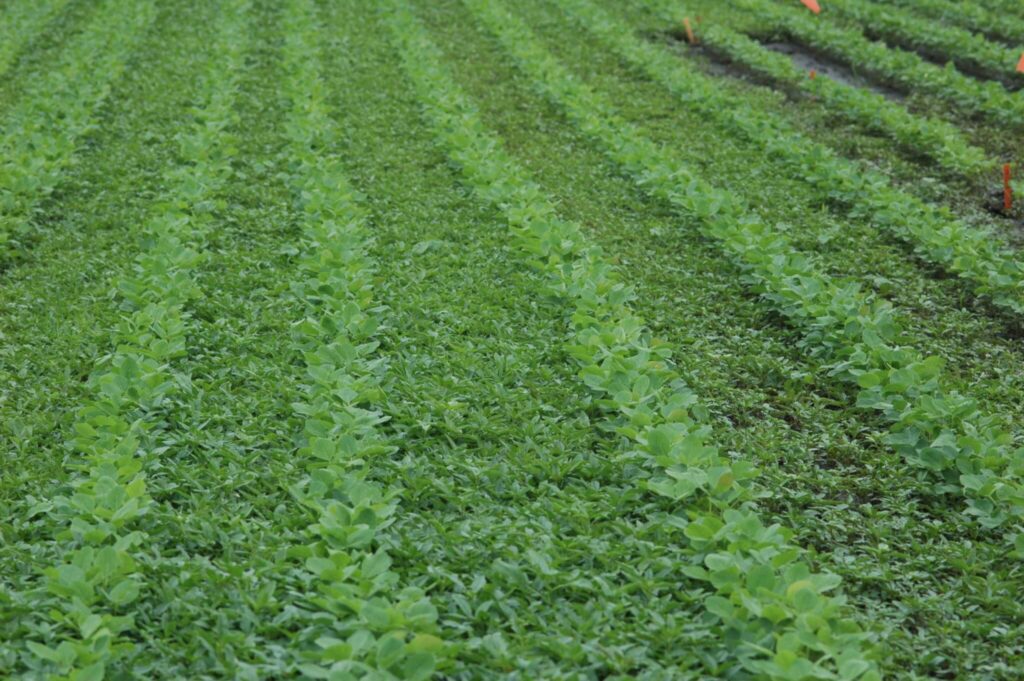
Waterhemp has plenty of room to breathe in these soybean rows. (Photo credit: Aaron Hager, University of Illinois)
When it comes to choosing soybean row spacing, some farmers feel torn between opting for narrow rows and better weed control or wider rows and reduced white mold problems.
But it doesn’t have to be an either/or decision, University of Wisconsin-Madison (UW) weed scientist Dr. Rodrigo Werle and UW plant pathologist Dr. Damon Smith explain, in a video produced by the University of Wisconsin Integrated Pest and Crop Management’s “Bumper Crop” series.
Both scientists are very familiar with the feared tradeoff between disease and weed control.
“Going narrow really helps suppress waterhemp in soybeans,” as Werle explains in the video below. “But then the first question that I get from growers…is, ‘I’m concerned about white mold, Rodrigo!’”
They are right to worry, Smith notes. “If you go from a 15-inch row to a 30-inch, you can actually delay the onset of white mold by 10 days,” he confirms.
There is a workaround, though! Growers can use narrow rows for weed control, and also reduce white mold severity by adjusting their planting population. “The key is to drop that planting population – we’re talking 100,000 seeds per acre, so pretty low planting populations,” Smith says. In fact, the UW researchers are seeing a positive effect on white mold with lower soybean populations across a range of row spacings, including 7.5-inch drilled rows, or 20- or 22-inch planter rows.
Worried about yield loss? Don’t be, Smith says. Research from fellow UW agronomist Shawn Conley has consistently shown that soybeans can compensate for low populations and retain high yield potential.
“The other thing to consider is you don’t have to go across the whole farm and do this,” Smith adds. “In the context of white mold, you can just concentrate on the areas where you have high levels of white mold and drop those planting populations there, and keep those populations up…in areas where you don’t have white mold issues.” Prescription planting technology is well suited to do exactly this kind of management, he adds.
Watch the full video with Werle and Smith below:
You can get more weedy wisdom from Werle and his team on their website WiscWeeds.info. And for more from Smith on white mold and other disease management challenges, visit BadgerCropDoc. Follow Rodrigo Werle on Twitter here, and Damon Smith here. See more details from GROW on the weed control benefits of narrow row spacing here.
This post originally appeared on the GROW website.


 and then
and then